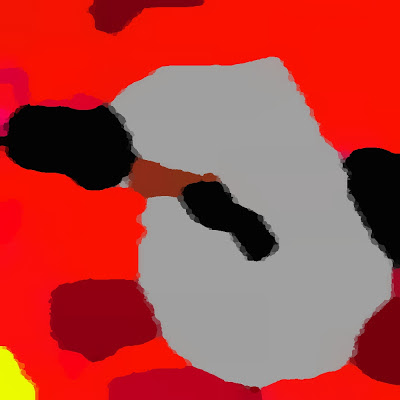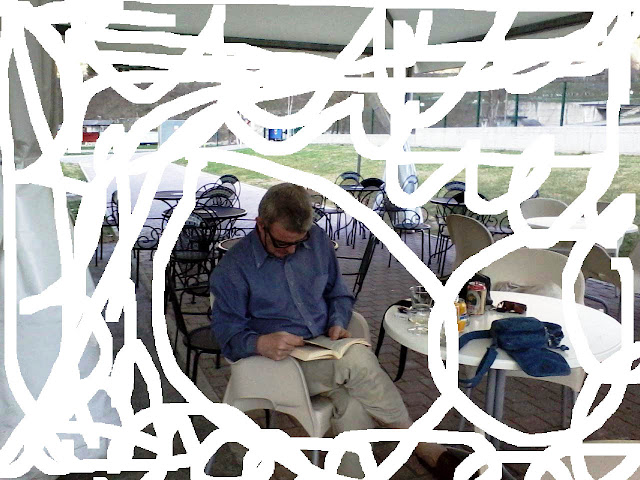Monday, February 18, 2013
Friday, February 15, 2013
Thursday, February 14, 2013
Two Collages by Cecil Touchon
Fusion Series #3316 - 2013 - 6x6 inches - lettering from a circus poster
Fusion Series #3315 - 2013 - 6x6 inches - lettering from a circus poster
Sunday, February 10, 2013
Saturday, February 9, 2013
Tuesday, February 5, 2013
Asemic Writing: An International Perspective
Michael Jacobson's anthology of asemic writing @ Bright Stupid Confetti:
Saturday, January 26, 2013
Wednesday, January 23, 2013
Tuesday, January 22, 2013
Monday, January 21, 2013
Sunday, January 20, 2013
Friday, January 18, 2013
Thursday, January 17, 2013
Sunday, January 13, 2013
Saturday, January 5, 2013
Friday, January 4, 2013
Sunday, December 30, 2012
Friday, December 28, 2012
Wednesday, December 26, 2012
Tuesday, December 25, 2012
Sunday, December 23, 2012
Saturday, December 22, 2012
Friday, December 21, 2012
Tuesday, December 18, 2012
Saturday, December 8, 2012
Thursday, December 6, 2012
Wednesday, December 5, 2012
Saturday, December 1, 2012
Friday, November 30, 2012
Tuesday, November 27, 2012
Zach Touchon - Asemic Writing
Zach Touchon, Los Angeles, California - Asemic Writing - ink on paper - zachtouchon.com
ANTAGONIST ANTAGONIST
Risk One: Never get out there; can't find the wilderness. The Risk of Stagnation.
Risk two: Never come back; lost in the wilderness. The Risk of Insanity.
Risk three: Go full circle (and take audience with). The risk of Completion. (Evan Parker )
Some thoughts on improvisational drawing, motor control and paradox.
Common coding theory states that perception and production are generally coupled in the motor system,
It suggests for instance that people perceive spoken words by identifying the vocal tract gestures with which they are pronounced rather than by identifying the sound patterns that speech generates.
Assuming that perception and production are linked in this way; How does paradox manifest itself in the motor system?
The muscular system exists of antagonist(stretching) and agonist (bending) muscles
A paradoxical instruction could co-activate antagonistic muscles and create a freeze or immobilisation of the limbs.
What kind of effect might this co-activating of antagonistic muscles have on free or improvisational drawing?
1.EVERSIVE (escaping completion)
Antagonists (quadriceps and the hamstrings) are simultaneously active when you arise from sitting.
This co-activation of two antagonistic muscles is known as Lombard's paradox.
The limbs don’t freeze because the extensor moment exceeds the flexor moment..
Here paradox brings about a fundamental change (from a passive to an active state).
So if a drawing based on instruction or method ends up in a passive state after it went ‘full circle’ the paradox could maybe offer some kind of escape.
2.INVERSIVE (back from the wilderness)
Blocking the wrist shifts movement control back to the elbow,
freezing elbow and wrist shifts it to the shoulder etc..
Consider this quote from Greogory Bateson; “Ashby has added a new facet in pointing out that to prevent change in the superficial variables is to promote change in the more profound.”(Bateson, G., Bateson, MC. (1988). Angels Fear:)
Freezing the wrist when drawing will probably result in decreasing variables of a line, and thereby automatically direct attention towards a more basic or fundamental pattern.
DRAWINGS;
( + ) active muscle
( _ ) relaxed muscle
 |
| _antagonist,_agonist (slack) |
 |
| +_antagonist, _+agonist (flow) |
 |
| +antagonist, +antagonist (inversive) |
 |
from;
+_antagonist,_+agonist
to;++antagonist
(escape completion) |
by
http://marcvanelburg.blogspot.nl/
see also;
https://www.flickr.com/photos/het-saptrajekt/
https://www.youtube.com/user/4398574291811/videos
marc van elburg
Monday, November 26, 2012
Friday, November 23, 2012
Wednesday, November 21, 2012
Sunday, November 18, 2012
Saturday, November 17, 2012
Subscribe to:
Posts (Atom)








































